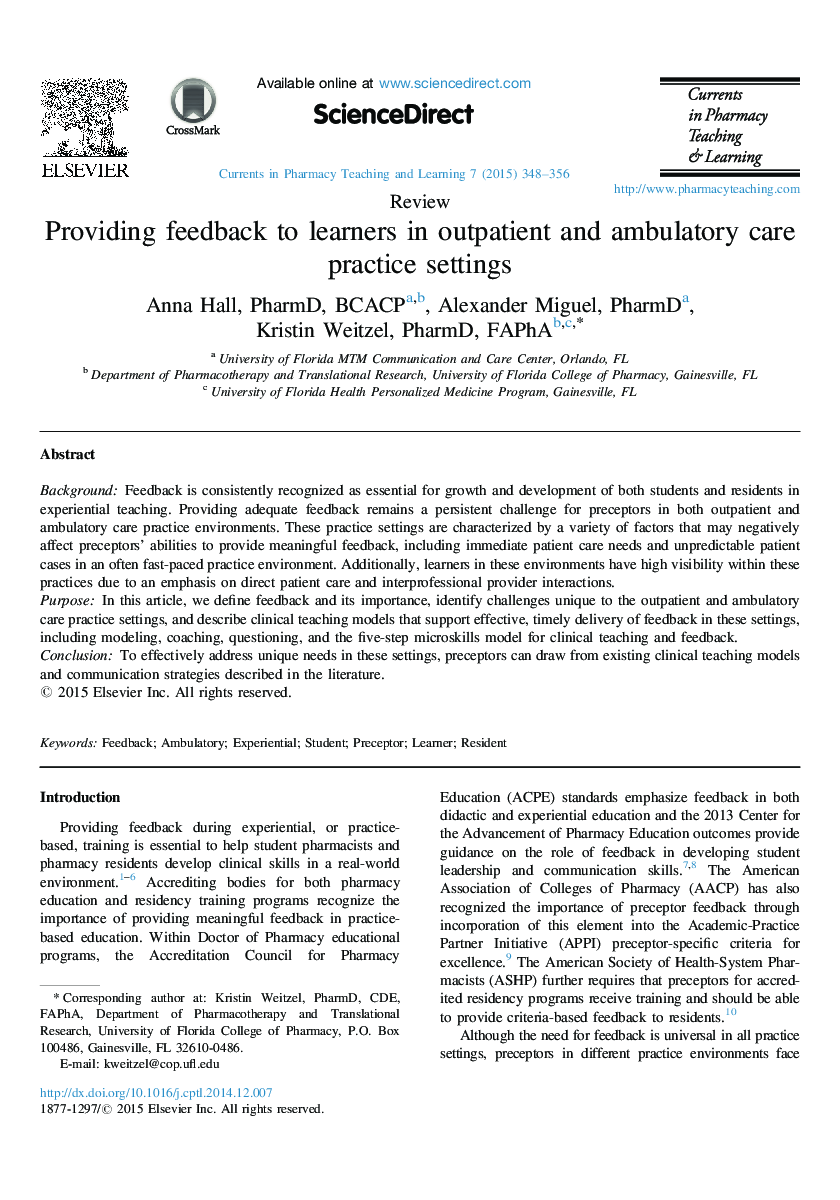| Article ID | Journal | Published Year | Pages | File Type |
|---|---|---|---|---|
| 353082 | Currents in Pharmacy Teaching and Learning | 2015 | 9 Pages |
BackgroundFeedback is consistently recognized as essential for growth and development of both students and residents in experiential teaching. Providing adequate feedback remains a persistent challenge for preceptors in both outpatient and ambulatory care practice environments. These practice settings are characterized by a variety of factors that may negatively affect preceptors’ abilities to provide meaningful feedback, including immediate patient care needs and unpredictable patient cases in an often fast-paced practice environment. Additionally, learners in these environments have high visibility within these practices due to an emphasis on direct patient care and interprofessional provider interactions.PurposeIn this article, we define feedback and its importance, identify challenges unique to the outpatient and ambulatory care practice settings, and describe clinical teaching models that support effective, timely delivery of feedback in these settings, including modeling, coaching, questioning, and the five-step microskills model for clinical teaching and feedback.ConclusionTo effectively address unique needs in these settings, preceptors can draw from existing clinical teaching models and communication strategies described in the literature.
